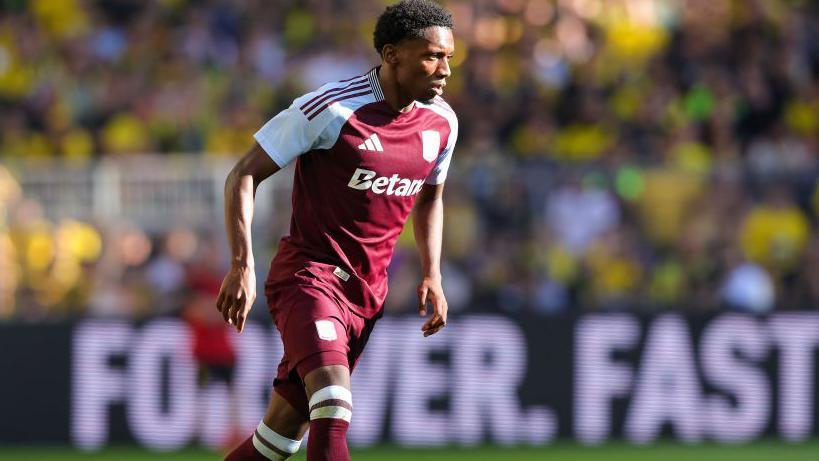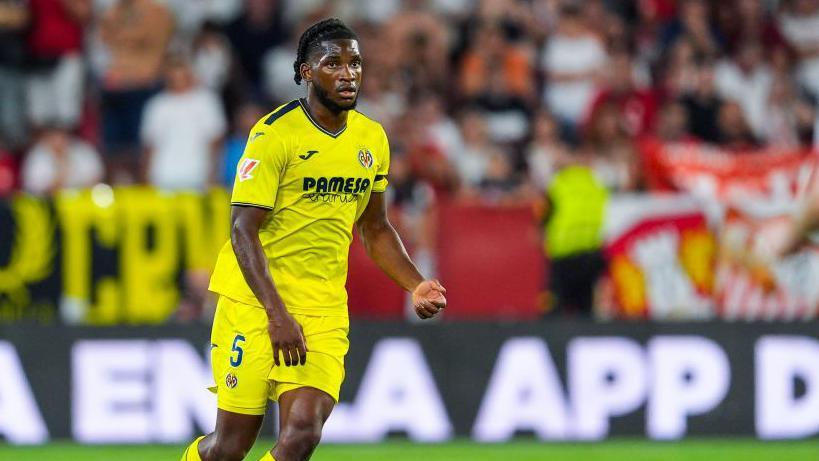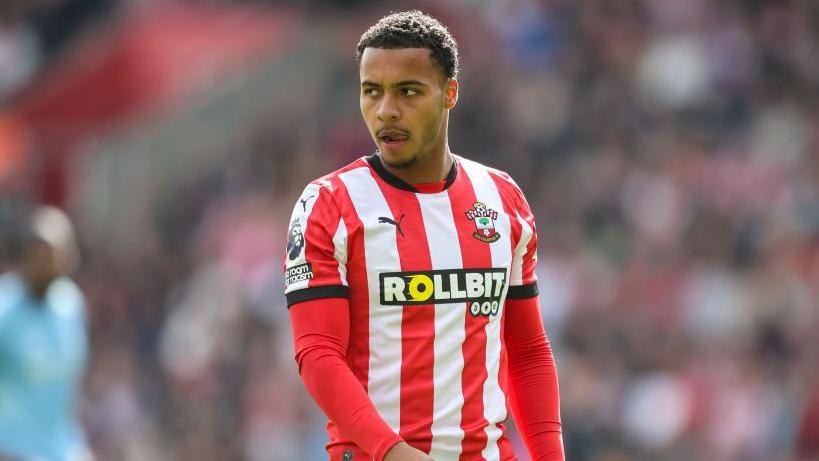Why are buy-back transfer clauses on the rise in football?

Aston Villa received a 30% discount on the re-signing of Jaden Philogene from Hull City, due to a sell-on clause agreed in their original sale to the Tigers
- Published
The buy-back clause is now a regular feature in the contracts of young players who are sold.
When negotiating, the selling club agree a fee with the buying club for which they can bring them back down the line.
One team gets their man and the other guards themselves against being stung in the future, if that player fulfils their potential.
But why have we seen a recent rise in buy-back clauses and 'matching rights'?
Which players have buy-back clauses?

Chelsea have the option to buy Tammy Abraham back from AS Roma for £68m
The buy-back clause is not a completely new phenomenon and there have been high-profile instances in recent years.
When Tammy Abraham moved from Chelsea to Roma in 2021, the Blues inserted a £68m buy-back clause into his contract, should they wish to bring him back to Stamford Bridge.
The Londoners also included this condition in Nathan Ake's Bournemouth contract but lost that option when the Netherlands international departed the Cherries in the summer of 2020 for Manchester City.
The defender's Netherlands team-mate Xavi Simons, formerly of Barcelona's academy, was sold by Paris St-Germain in 2022 and, after just one year of impressing for PSV Eindhoven the Eredivisie, he returned to the French capital thanks to a buy-back option the French giants had included in the sale.

Defender Willy Kambwala, 20, left Manchester United for Villareal this summer in a deal worth up to £9.7 million.
However, clubs do now appear to be utilising this option more often.
Jamie Khan, director of the Sports Agent Academy, says this is because it gives them flexibility both from a financial point of view and in case the player turns out to be a star in the future.
This summer Liverpool agreed to let midfielder Bobby Clark join Austrian side Red Bull Salzburg but included a 17.5% sell-on clause in the deal and an option for the Reds to match any future bids for Clark.
Manchester United recently sold Uruguayan winger Facundo Pellistri to Greek side Panathinaikos and have the option to bring him back to Old Trafford in the future.
Young defender Willy Kambwala also departed for Villarreal, though United have matching rights for three years on any bids other clubs may make for him, plus the customary buy-back clause.
Aston Villa also exercised their option to re-sign 22-year-old winger Jaden Philogene from Hull City this summer, matching Ipswich Town's £18m offer.
However, Hull only received about £13.5m of the fee because Villa had a 30% sell-on clause in the agreement that took him to the Tigers last September.
Why not just send them out on loan?
Traditionally, if a player was not ready for first-team football, they were sent out on loan to earn their stripes at another club.
That is no longer the case, because of loan limits introduced by Fifa, world football's governing body, and also by the Premier League.
In July, Fifa reduced the number of players a club can send out on loan from eight to six.
This prevents clubs like Chelsea from creating a ‘loan army', where a great number of players were plying their trade across the globe but still owned by the Blues.
The financial benefits

In the space of nine months, Southampton striker Cameron Archer has played for three different clubs.
The Premier League's Profit and Sustainability rules are leading to a lot of clubs selling academy players, as they represent 'pure profit' on their balance sheet.
"A lot comes down to financial fair play and if clubs are able to sell their younger players now it gives them a lot of financial flexibility," explains Khan.
"If they have come through the academy, it is total profit and gives them immediate funds. So underneath any kind of financial fair play, they suddenly have these funds available.
"In terms of risk mitigation, if the player goes on and develops into a superstar it gives them first rights on taking the player back.
"It makes a lot of sense for them in terms of being able to control the player's future, in a way.
"There is also a benefit for the buying club. There is a bit of negotiating leverage because if there is a buy-back clause included then often the player will be sold for cheaper than they're actually worth, which makes it appealing."
There have also been cases of clubs buying a player back before selling again, something Aston Villa did this summer.
The Villans sold striker Cameron Archer to Sheffield United in January but brought him back to Villa Park because of a clause that, reportedly, saw them obliged to purchase him for a cut-price fee if the Blades were relegated.
Villa parted with the 22-year-old again less than a month later, this time selling him to newly promoted Southampton for £15m.